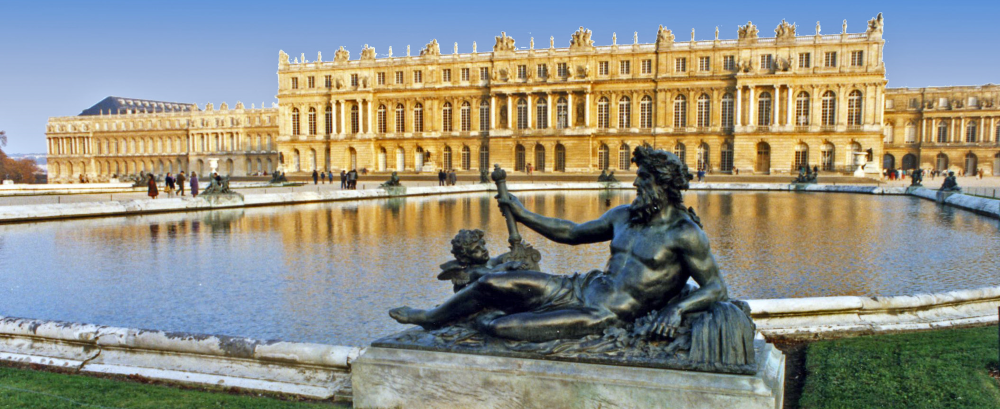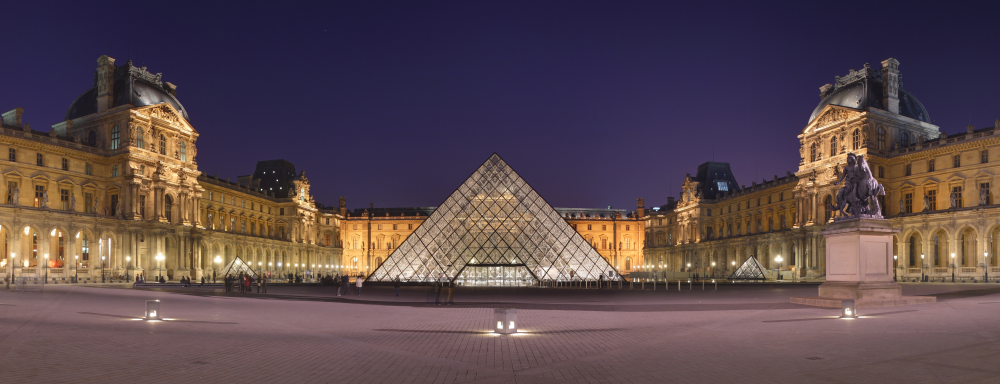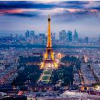Paris - mon amour
Paris has so ridiculously much to offer - what's probably not coming back of the very few - that it can be difficult to grasp, not to say impossible to write down everything. Therefore, we at Student Guide in our travelogue given different views on how to angle his visit to Paris, depending on the study you are traveling with.
Discover the Eiffel Tower and the unique charm of Paris
Seightseeing ..
However, there are several things you have to tick by when visiting Paris. Here comes Studenterguidens suggestions on what to see when visiting Paris. Seightseeing belong naturally with at any brand travel program, whether it is a social science class you are traveling with or science.
There are several obvious ways to see Paris. For example. join one of the well-known red seightseeingsbusser. There are also a myriad of different guided tours, like to take a ride on the Seine. Contact your travel agent to hear what they have good experiences with, and who they may. has agreements with.

Eiffel Tower:
The Eiffel Tower is Paris' hallmark - and probably also the world's most famous tower. The tower was built for the World Fair in 1889. Originally, it should have only been temporary, but luckily got the tower allowed to remain standing. When it was finished, it was strongly criticized by the 1800s aesthetes. Subsequently, it must be said that it has taken revenge. The Eiffel Tower is 319 meters high - more than nine times the Round Tower. Until 1931, when the Empire State Building was built, it was the world's tallest building. To visit the Eiffel Tower can be a bit of a patience test. In high season lift the limited capacity mean that there can be up to a few hours of queuing. But of course you can also just choose to walk the 1,665 steps up. No matter how to get up, then it's worth the effort. When you reach the top, you are rewarded with a spectacular view. On a good day you can see the entire 72 km.
Arc de Triomphe
The old Triumfbue- located right on the Place Charles de Gaulle. It marks the beginning with 12 avenues include Champs Elysées. During the 50 meter high arch is a tomb of the unknown soldier with the eternal flame.
Notre-Dame:
Notre-Dame, located on the Ile de la Cité - the Roman landscaped Paris, is built on the foundations of a Roman temple. The church, begun in 1163 and was completed in 1330, is a masterpiece of Gothic style. Visits to the church itself is free. It is possible to come up in the twin towers. South Tower houses the 13-ton
Emmanuel-bell:
Emmanuel bell. At the risk of becoming the trust tiring literature teacher would make sense, just read just a snippet of The Hunchback of Notre Dame. One can of course also take girly version and see Disney version ....
Underground - Paris with a historical angle.
It's been one of the first times this has been written as a heading in a travelogue, but as something quite unconventional, there are several opportunities to see Paris "from below". One of them is the catacombs. Here you are met with scripture: Stop! This death is rich! "Those are namely engraved above the entrance to Les Catacombes and this historic place lives up to this title.
Catacombs:
Catacombs is a collection of millions of skulls and bones in the late 1780s, was moved from a cemetery down in the catacombs. These remains of people located 22 meters below the earth's surface, somewhere that during the 2nd World War Resistance Movement headquarters.
Catacombs is an incredibly exciting experience not to be missed, but it is not for the faint hearted. To get the optimum out of the visit, it is recommended that you buys audio guide. Within a visit so be aware that there are many restrictions on the number of visitors and so on. So make just to check it home. It's silly to miss a visit because of the group must be apportioned.
Another bit unconventional sightseeings are the 2.100 km sewer that runs below Paris. There is established a sewer museum, where the mysteries of Paris' underground can be explored. Posters, photos, movies and of course, the part of the time I can go in, give a very instructive explanation of what happens in the streets of Paris.

Versailles
About 21 km southwest of Paris you will find the roofed & aring; dike and beautiful castle of Versailles in the town of the same name.
Versailles was originally a small hunting lodge, but Louis the 14th was in the late 1600s expanded the castle, so it was large and splendid edifice it is today. Both the castle and the garden is huge, so you can easily spend a whole day in Versailles. The most impressive room in Versailles castle is the hall of mirrors. The hall is 70 meters long and overlooks the garden. Hall of Mirrors was originally used for official receptions. The garden at Versailles is just as impressive as the castle. It is green and lush and a perfect place to take a walk and enjoy the surroundings. The garden is also great, and you should expect to spend fifteen minutes just to walk to the lake. If the legs are tired, you can hop on the little train that goes from the right side of the main building, which takes you around the garden's attractions.
Neptune Fountain
Wanna see the famous Fountain of Neptune, go to the right front of the main building.
The garden is also the "little" extra slot Grand Trianon, which Louis the 14th was built, that he had a place to be with his mistresses. The palace is despite its message end size compared to the main palace the size of a Danish manor.
When Versailles was later Louis 15's, he built an even smaller slot called Petit Trianon. A place where he could be himself. Another 10-minute walk from Grand Trianon you will find Hameau de la Reine. Hameau de la Reine is a small farming village. It was Queen Marie Antoinette, who had built this small artificial town, so she could play peasant idyll. The village has several houses, farms and cattle.
The scientific angle
For classes that travels with the subjects physics / chemistry, can the small Madam Curie museum recommended. The museum tells of Pierre and Marie Curie, who discovered the element radium. The exhibition shows how you worked with research in the 1900s. Is given a tour of approximately 45 minutes. The visit must be booked in advance, in turn, is the hall for free. Something indeed often on French museums.
Parc de la Villette:
Sciences - includes a huge science museum with planetarium, exhibition of the latest technology and sensory shows, cinema, music center and a simulator cinema.
Explora:
Here is example. Explora, the world's largest science and technology museum. Here you can include gain insight into the astronaut's life, experience a sense exhibition, visit the media library, see / try the different exhibits about sound, light, mathematics, aerodynamics and much more. The ticket for Explora also provides access to the Planetarium. A large sophisticated dome depicting the firmament with the stars. There are presentations every hour. Show up in good time, as each display is only room for 220 people.
Here you can also visit La Geode (Imax) - Sal with the world's largest 360o projection screen (1000 square meters). It is a performance with superb picture and sound - and Le Cinaxe, there is a thrill ride in Europe's largest mobile simulator that moves its passengers as the images shown. Parc de la Villette therefore offers countless opportunities and is definitely worth a visit if you are traveling with a class that has this kind of trends.
Fragonard Perfumery:
One last place that has a scientific angle is Fragonard Perfumery. They have three factories in Grasse on the French Rivieria. Grasse is considered by many perfume mecca. The factories produce perfumes, soaps and other cosmetics. In addition to factories in Grasse Fragonard has also two museums in Paris. At each museum it is possible to get a tour and examination of how they produce perfume. You will hear about the production of perfumes and other cosmetics, as well as see the process from raw material to finished product. This is a great visit for physics / chemistry interested groups.

Madseeing
The museum Choco-Story
Learn about cocoa origin and chocolate development over the years. You will learn about the process from the cocoa bean to the ready-made confections. Furthermore, demonstration of how to make chocolate confections. There is also the opportunity to make an active workshop, where you can conjure up in the kitchen and learn how to make your own chocolate confections. In our erfaring at Student Guide, it makes a visit an extra edge and that students simply remember better if they are activated.
We should also like to point out that there are a great many fine markets in Paris, which certainly is worth a visit.
In art signs ...
Louvre:
This museum is not finished after one visit - or two or three for that matter. Louvre has a history dating back to medieval times, and the museum houses one of the world's most important art collections. Here one can find the famous Mona Lisa and many other masterpieces of the great artists. A visit here, we believe in the Student Guide should be obligatorisk- be be sure that this amount of paintings is so overwhelming that you drown if you do not have a clear focus of his visit. The museum has had special meaning for Dan Brown's Da Vinci Code. It gives a nice angle to read this bestseller, before visiting the museum.
Claude Moanets:
Is it not enough of art here, you can visit the famous painter Claude Moanets home and garden in Giverny about 75 km northwest of Paris. In the garden, he was inspired to the famous image with water lilies. After visiting many believe that his greatest work of art is this garden. Both house and garden is lovingly preserved and stands as when he lived there from 1883 until his death in 1926th
The former railway station from the turn of the century now forms the framework for the Musee D'Orsay. It was in 1986, opened as a museum of modern art. The museum is best known for its Impressionist collection including paintings by Van Gogh, Monet and Renoir.
Centre de Georges Pompidou:
Centre de Georges Pompidou is a very special building with exterior escalators, elevators and air and water pipes. Inside there are many impressive paintings, portraits and other works of art. Moreover, there are regular special exhibitions. In the square outside the center there are also funny sculptures and often street performers. It is a lovely vibrant place to take pupils.
business
Take a day out in the French countryside to the champagne district Reims and visit a champagne producer. Here you will be shown around by an English speaking guide and learn about the production of champagne. There are also many other wine producers to visit. Fashion is something you naturally associate with Paris, and here too there are several exciting opportunities. When we become a little nebulous here, it is because the possibilities really depends on which agency you are traveling with. Otherwise, a simple google retrieval also get under way. The Danish Embassy and the Danish Chamber of Commerce is also an interesting visit.

Time to put away childish things ...
One should not underestimate the social element on a study, and what better place to nurture it than Disneyland Park Paris ?!
Disneyland?
The park is located 32 km east of Paris. The park is divided into five thematic areas, starting with Main Street USA, which takes you to the Disney castle and the park. Furthermore, there Frontierland, Adventureland, Fantasyland and Discoveryland. Here's entertainment for everyone and activities for many hours. Remember to book tickets at least 8 weeks before the visit.
You can also visit Walt Disney Studios Park, a park based on the Disney studio, here you can include experience: Special effects which include is used in the movie Armageddon, Live shows by stunt men and fast cars. A trip along Hollywood Boulevard and see film sets. The Twilight Zone, the Tower of Terror - a haunted house with many special effects.
In other words..
Surprise! Paris is a good study-trip city because it offers endless opportunities to make a visit both educationally relevant but also fun!
Get help with travel planning



